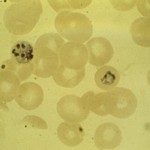Lien vers Pubmed [PMID] – 8164695
Mol Cell Biol 1994 May; 14(5): 3504-13
A DNase I-hypersensitive site analysis of the 5′-flanking region of the mouse alpha-cardiac actin gene with muscle cell lines derived from C3H mice shows the presence of two such sites, at about -5 and -7 kb. When tested for activity in cultured cells with homologous and heterologous promoters, both sequences act as muscle-specific enhancers. Transcription from the proximal promoter of the alpha-cardiac actin gene is increased 100-fold with either enhancer. The activity of the distal enhancer in C2/7 myotubes is confined to an 800-bp fragment, which contains multiple E boxes. In transfection assays, this sequence does not give detectable transactivation by any of the myogenic factors even though one of the E boxes is functionally important. Bandshift assays showed that MyoD and myogenin can bind to this E box. However, additional sequences are also required for activity. We conclude that in the case of this muscle enhancer, myogenic factors alone are not sufficient to activate transcription either directly via an E box or indirectly through activation of genes encoding other muscle factors. In BALB/c mice, in which cardiac actin mRNA levels are 8- to 10-fold lower, the alpha-cardiac actin locus is perturbed by a 9.5-kb insertion (I. Garner, A. J. Minty, S. Alonso, P. J. Barton, and M. E. Buckingham, EMBO J. 5:2559-2567, 1986). This is located at -6.5 kb, between the two enhancers. The insertion therefore distances the distal enhancer from the promoter and from the proximal enhancer of the bona fide cardiac actin gene, probably thus perturbing transcriptional activity.

